Big screen battle -- iPhone 16 Pro Max vs iPhone 15 Pro Max features compared
The iPhone 16 Pro Max has gained a new camera, more performance, and an even bigger screen. This is how Apple changed the latest and largest model from 2023's iPhone 15 Pro Max.
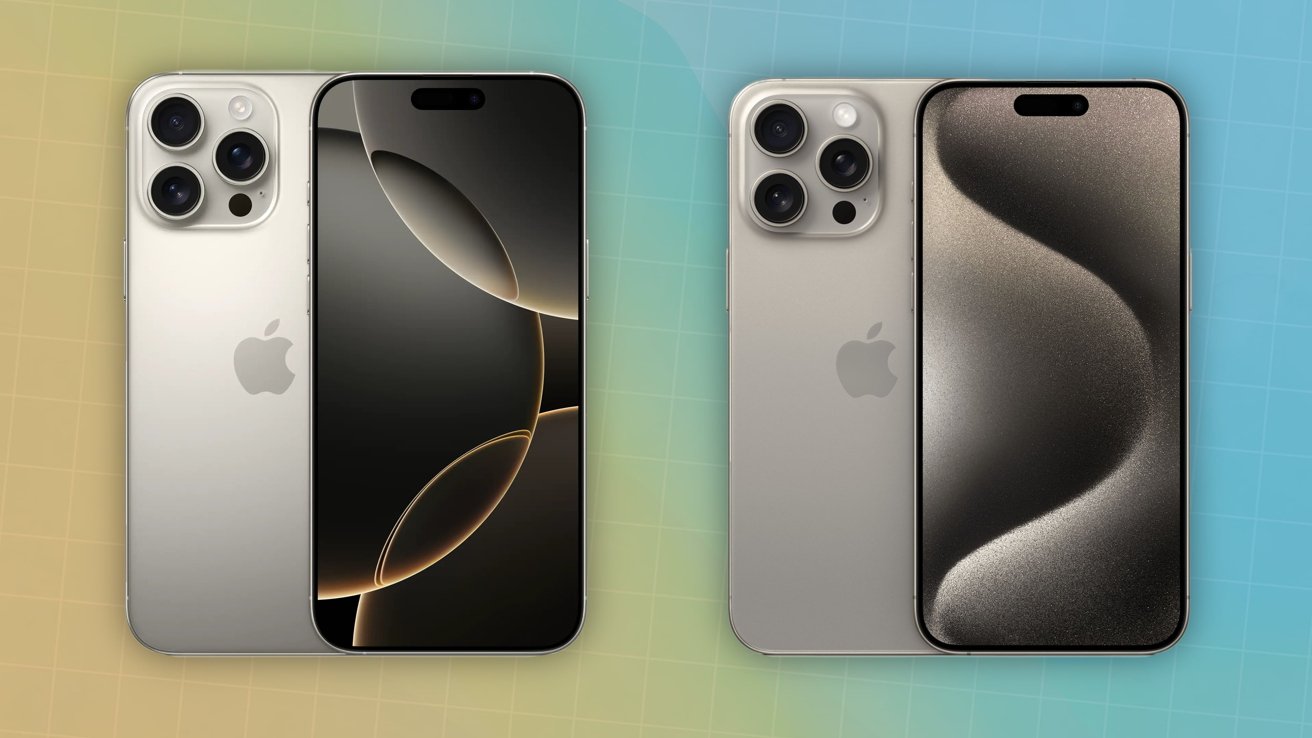
iPhone 16 Pro Max [left], iPhone 15 Pro Max [right]
On September 10, Apple introduced its next wave of iPhones to the world. The iPhone 16 Pro Max is the top-of-the-range option, both in terms of size and in capability.
This time around, Apple made sure that the iPhone 16 Pro Max is the biggest option, literally. Size isn't entirely everything, as Apple Intelligence and the cameras had some attention too.
Here's how the 2024 iPhone 16 Pro Max differs from the iPhone 15 Pro Max.
iPhone 16 Pro Max vs iPhone 15 Pro Max - Specifications
| Specifications | iPhone 16 Pro Max | iPhone 15 Pro Max |
|---|---|---|
| Starting Price (launch) | $1,199 | $1,199 Check offers |
| Dimensions (inches) | 6.42 x 3.06 x 0.32 | 6.29 x 3.02 x 0.32 |
| Weight (ounces) | 7.99 | 7.81 |
| Processor | A18 Pro | A17 Pro |
| Storage | 256GB, 512GB, 1TB | 256GB, 512GB, 1TB |
| Display type | 6.9-inch Super Retina XDR, ProMotion, always-on display | 6.7-inch Super Retina XDR, ProMotion, always-on display |
| Resolution | 2,868 x 1,320 at 460 ppi | 2,796 x 1,290 at 460 ppi |
| True Tone | Yes | Yes |
| Biometrics | Face ID | Face ID |
| Connectivity | 5G (Sub-6GHz and mmWave) Gigabit-class LTE Wi-Fi 7 Bluetooth 5.3 Ultra Wideband Gen 2 NFC Emergency SOS via Satellite Roadside Assistance via Satellite USB-C | 5G (Sub-6GHz and mmWave) Gigabit-class LTE Wi-Fi 6E Bluetooth 5.3 Ultra Wideband Gen 2 NFC Emergency SOS via Satellite Roadside Assistance via Satellite USB-C |
| Rear Cameras | 48MP Wide 48MP Ultra Wide 12MP Telephoto with 5x optical zoom | 48MP Wide 12MP Ultra Wide 12MP Telephoto with 5x optical zoom |
| Video | 4K 120fps, 1080p 240fps Slo-Mo ProRes 4K 120fps with external recording, Cinematic Mode, HDR, Action Mode | 4K 60fps, 1080p 240fps Slo-Mo ProRes 4K 60fps with external recording, Cinematic Mode, HDR, Action Mode |
| Front Camera | 12MP TrueDepth with Autofocus | 12MP TrueDepth with Autofocus |
| Battery Size (Video playback time) | Up to 33 hours | Up to 29 hours |
| Colors | Black Titanium, White Titanium, Desert Titanium, Natural Titanium | Black Titanium, White Titanium, Blue Titanium, Natural Titanium |
iPhone 16 Pro Max vs iPhone 15 Pro Max - Physical dimensions
The iPhone 15 Pro Max is, as the name hints, the biggest smartphone in the line. Measuring 6.29 inches long and 3.02 inches wide, it's quite a large smartphone for most people, but Apple did try to shrink the footprint compared to its predecessor.
For the iPhone 16 Pro Max, Apple decided bigger is better for the Pro models. The super-sized update is now longer and wider at 6.42 inches and 3.06 inches.
At 0.32 of an inch, the iPhone 15 Pro Max is quite thin. The iPhone 16 Pro Max maintains that for another year.
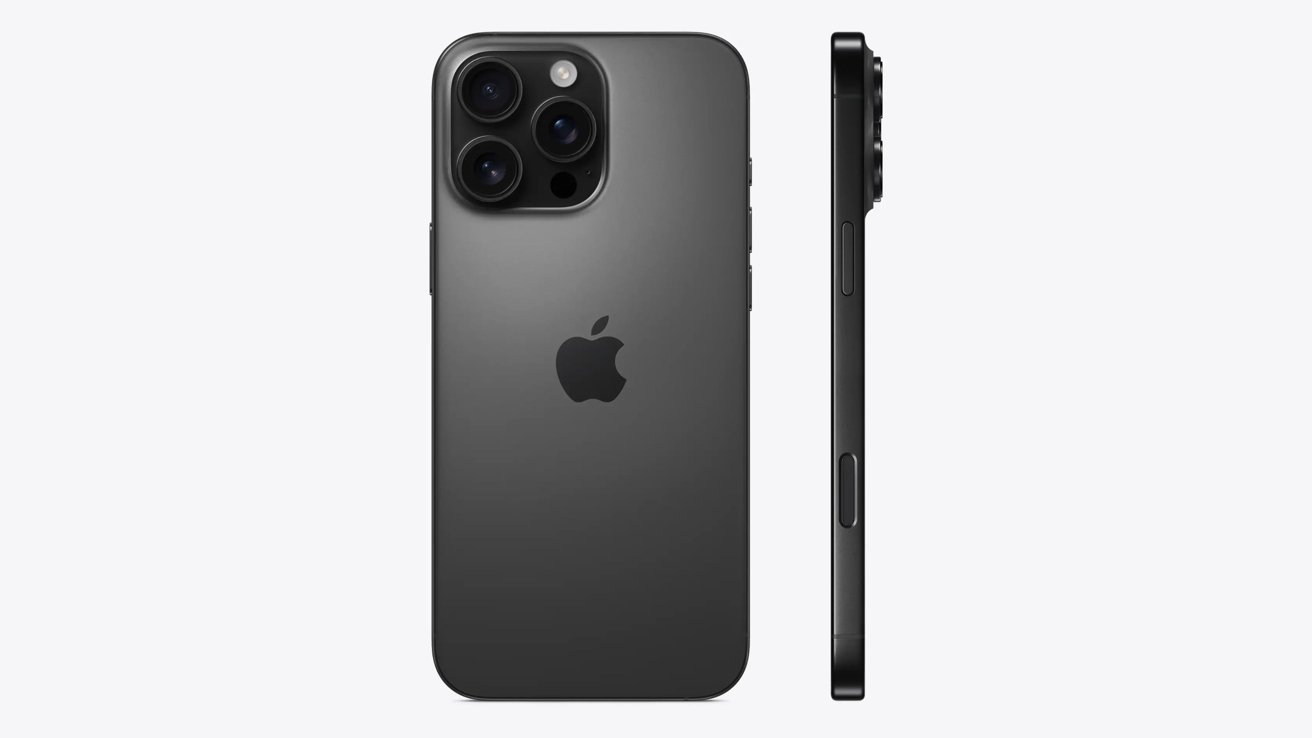
iPhone 16 Pro Max vs iPhone 15 Pro Max: The front and side view of the iPhone 16 Pro Max
As well as shaving its physical size, Apple put the iPhone 15 Pro Max on a diet, with the model shipping at 7.81 ounces. This was 0.66 ounces less than the 2022 model it was replacing.
This weight loss was largely caused by a major change in construction. The usual Ceramic Shield-protected glass sandwich was accompanied by a switch from a stainless steel frame for a Grade 5 titanium version for added strength.
The bigger size of the iPhone 16 Pro Max also adds weight. This time, the model tips the scales at 7.99 ounces.
iPhone 16 Pro Max vs iPhone 15 Pro Max - Display
The iPhone 15 Pro Max kept the same display as the iPhone 14 Pro Max, consisting of a 6.7-inch all-screen OLED branded as a Super Retina XDR display. Its 2,796 by 1,290 resolution gave it Apple's usual fantastic pixel density of 460 pixels per inch.
This included having a contrast ratio of 2 million to one. For brightness, it reached 1,000 nits for typical uses, 1,600 nits peak HDR brightness, and up to 2,000 nits for outdoor usage.
The iPhone 15 Pro Max also has an always-on display, with ProMotion support providing adaptive refresh rates as high as 120Hz, depending on your choice of content.
All of these details are reflected in the screen of the iPhone 15 Pro Max, except for the size. At 6.9 inches, it's a bit bigger overall, though Apple did try to minimize the bezels.
The larger size also allows for a higher 2,866 by 1,320 resolution in the iPhone 16 Pro Max. This maintains Apple's preferred pixel density of 460 pixels per inch.
At the top of the iPhone 15 Pro Max and the iPhone 16 Pro Max is the Dynamic Island, Apple's UI-based method of hiding the camera module at the top without resorting to the notch.
Wide Color (P3) support, HDR, TrueTone, and the oleophobic coating to ward off fingerprints are present as usual in both displays.
iPhone 16 Pro Max vs iPhone 15 Pro Max - Cameras
Around the back of the iPhone 15 Pro Max is the typical square camera bump containing a trio of cameras and LiDAR. For the most part, there's a lot of duplication in the iPhone 16 Pro Max, but some new elements too.
The Main camera of the iPhone 15 Pro Max has a 48-megapixel sensor, an f/1.78 aperture, and a second-generation sensor shift optical image stabilization system. The sheer size of the sensor allows it to offer three effective focal lengths of 24mm, 28mm, and 35mm, and a 24-megapixel default image size.
It also allowed Apple to create a virtual 12MP 2x Telephoto camera, thanks to its sheer size.
The Main camera in the iPhone 16 Pro Max is almost exactly the same. Apple simply renamed it the Fusion camera.
The Ultra Wide camera on the iPhone 15 Pro Max uses a 12-megapixel sensor with an f/2.2 aperture. Its 120-degree field of view is quite wide, and great for group photography.
On the iPhone 16 Pro Max, the Ultra Wide now has a 48MP resolution, four times that of it's predecessor. The field of view and aperture remain the same.
The iPhone 15 Pro Max's Telephoto camera was the highlight for the model. While it had a 12-megapixel sensor and an f/2.8 aperture, it was the tetraprism design that stole the show.
Tetraprism allowed Apple to shift to a 5x optical zoom, instead of a 3x as used previously. A 3D sensor-shift OIS was also adopted for the camera.
As a result, the iPhone 15 Pro Max offered a digital zoom of up to 25x.
Apple didn't believe it had to mess with the Telephoto on the iPhone 16 Pro Max. Though, you have to expect that it will be the next sensor to be upgraded to 48MP.
All of the iPhone 15 Pro Max cameras benefits from 100% Focus Pixel coverage to help with focusing on subjects. The usual LiDAR sensor also aided focusing, especially when used for low-light shots.
The cameras on the iPhone 15 Pro Max are the same, except that the Ultra Wide uses Hybrid Focus Pixels instead.
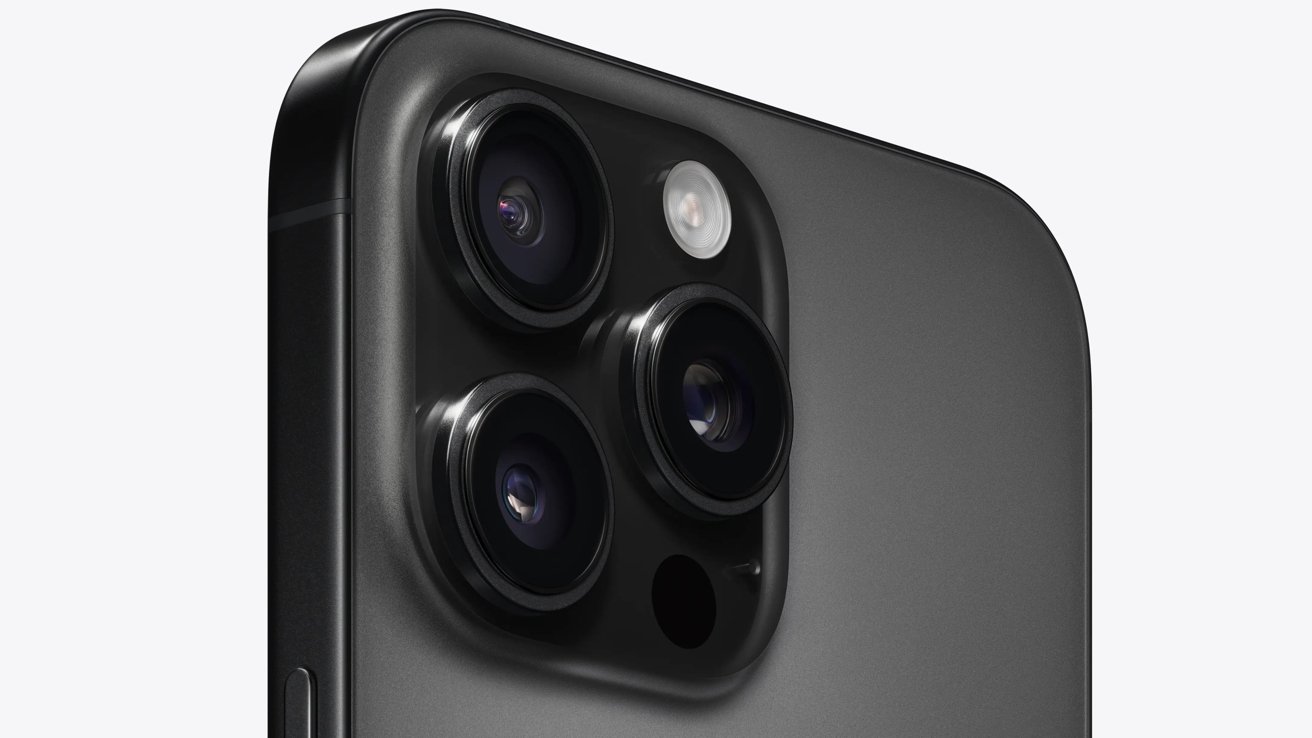
iPhone 16 Pro Max vs iPhone 15 Pro Max: Ultra Wide gains 48MP in 2024
Apple continued to press on with its computational photography efforts in the iPhone 15 Pro Max, with the Photonic Engine and Deep Fusion put to work. For stills, there was support for Portrait model with a six-effect Portrait Lighting system, Night Mode, Smart HDR 5, and other usually-appearing functions.
Again, Apple didn't really change these specification points when it comes to the iPhone 16 Pro Max.
For video, the iPhone 15 Pro Max could handle 4K 60fps Dolby Vision HDR, 4K HDR Cinematic Mode at 60fps, and a 2.8K 60fps Action Mode. Slo-mo remained the same as its predecessor at 1080p 240fps.
Apple's big video changes for the iPhone 15 Pro Max started off by enabling 4K 60fps recording of ProRes video, thanks to the addition of external recording support. You could plug a drive into the USB-C port and record to that drive instead of the internal storage.
The iPhone 15 Pro Max continued to pander to the videography crowd with log video recording for the first time, as well as support for the Academy Color Encoding System.
For the iPhone 16 Pro Max, the 4K Dolby Vision video was upgraded, with it capable of up to 120fps captures on-device. Adding ProRes to the mix meant you could go up to 4K 120fps when recording externally.
This time around, Apple decided to make audio a bigger thing for video. Using four studio-quality mics, it offers wind noise reduction and a customizable audio mix feature.
The front camera of the iPhone 15 Pro Max was included as part of the TrueDepth camera array. The 12MP sensor with an f/1.9 aperture had Focus Pixels and a six-element lens.
Its features included Portrait Mode and Portrait Lighting, recording at 4K 60fps video including external ProRes recording, Dolby Vision at 4K60fps, a 30fps 4K HDR Cinematic mode, and the Log and ACES support.
The iPhone 16 Pro Max's front camera is practically the same, though it is still limited to 4K Dolby Vision video at 60fps.
One big party piece of the iPhone 16 Pro Max is its new Camera Control button. Placed on the side, it can summon the camera app and function as the shutter button.
As a capacitive button, it also allows users to change settings, through a combination of taps and sliding their finger across its surface.
iPhone 16 Pro Max vs iPhone 15 Pro Max - Processing and Performance
Apple's annual improvement to its A-series chips primarily improves its Pro lines before the non-Pro. In 2024, this saw the iPhone 15 Pro Max benefit from having the A17 Pro.
The first 3-nanometer chip, it has a six-core CPU with two performance cores and four efficiency cores, a six-core GPU with hardware-accelerated ray tracing, and onboard AV1 decoding. The Neural Engine was also improved, with the 16-core component capable of 35 trillion operations per second.
Made from a second-gen 3-nanometer process, the A18 Pro also has a six-core CPU with an identical core split. However, the CPU is marketed as being 15% faster than the A17 Pro, while also using 20% less power.
The CPU also benefits from new ML accelerators, which are optimized for Apple Intelligence.
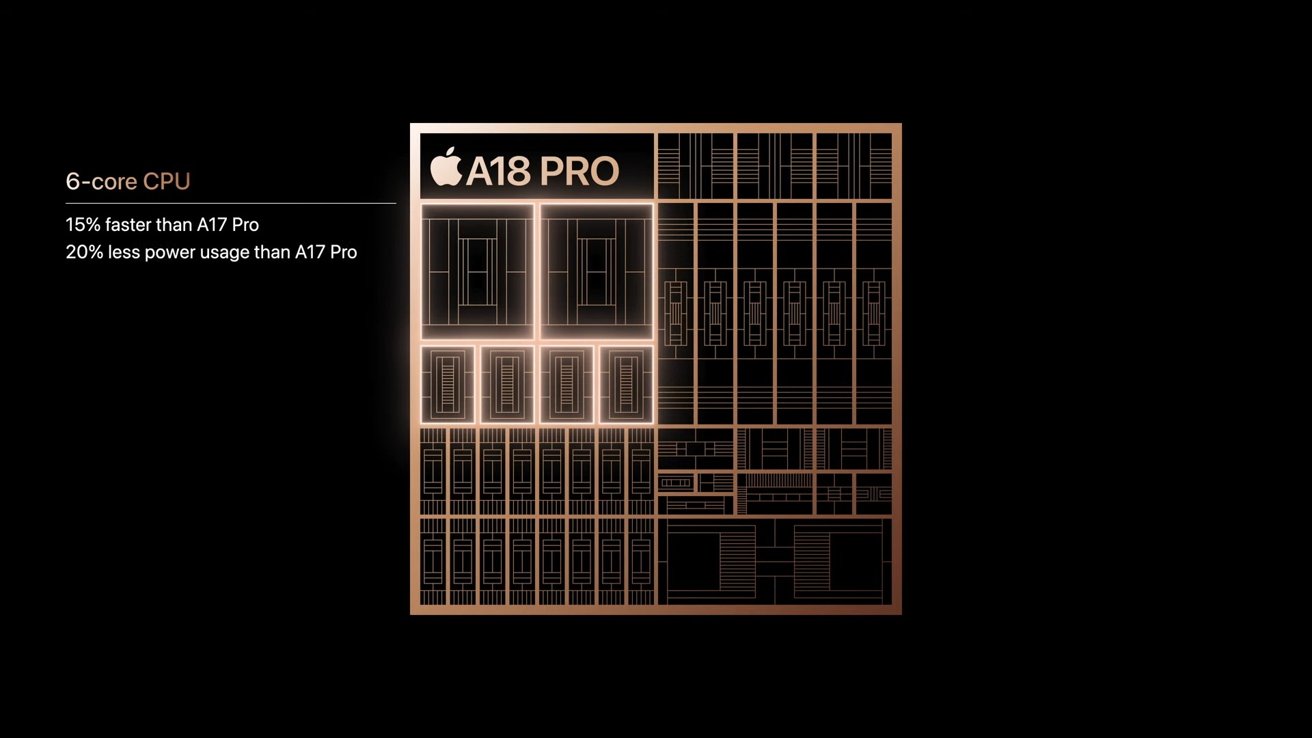
iPhone 16 Pro Max vs iPhone 15 Pro Max: The A18 Pro promises improvements across the board.
The six-core GPU in the iPhone 15 Pro Max is improved upon in the iPhone 16 Pro Max, by about 20%. It's also bumped the performance of hardware-accelerated ray tracing to be twice as fast.
The 16-core Neural Engine has also been updated in the A18 to be faster, in part due to having 17% more memory bandwidth.
The A18 Pro also benefits from a new image signal processor and video decoder, which are both twice as fast as the A17 Pro equivalents.
A key development later in the iPhone 15 generation was the introduction of Apple Intelligence at WWDC. While it would be introduced alongside the iPhone 16 smartphones, the iPhone 15 Pro and Pro Max were the only existing smartphones that were confirmed to support the generative AI functionality.
With the various chip improvements, the iPhone 16 Pro Max will offer more performance when it comes to Apple Intelligence tasks.
At this early stage just after launch, we cannot perform a direct comparison between the A17 Pro and Apple's newest chip. For the moment, we have to go by Apple's claims of the latest release being faster and better than the older one.
iPhone 16 Pro Max vs iPhone 15 Pro Max - Connectivity
On a cellular basis, the iPhone 15 Pro Max and iPhone 16 Pro Max both have 5G support covering both sub-6GHz and mmWave bands, as well as LTE. If you're in a blackspot, Emergency SOS via Satellite will allow you to send messages for assistance.
For local connectivity, there's Wi-Fi 6E support as well as a second-generation Ultra Wideband chip, and Thread support in the iPhone 15 Pro Max. The iPhone 16 Pro Max shifts up to Wi-Fi 7, which will be more useful for future Wi-Fi network infrastructure.
The iPhone 15 Pro Max saw Apple change from Lightning to USB-C, which provides 10Gbps data transfers as well as direct charging capabilities. For videographers, this allows the iPhone to be more easily used to capture video and to offload it quickly, if they don't do external recording.
The USB-C port is still present and correct in the iPhone 16 Pro Max, with the same level of bandwidth available.
iPhone 16 Pro Max vs iPhone 15 Pro Max - Power and Battery
The iPhone 15 Pro Max offered the largest battery life in the iPhone range, with Apple claiming 29 hours of video playback for locally-stored video, or up to 25 hours for streamed video. There was also up to 95 hours of audio playback possible.
Thanks to a larger battery and reduced resource consumption, the battery life of the iPhone 16 Pro Max is extended further. Local video playback can run to 33 hours, 29 hours if streamed, and up to 105 hours of audio.
Charging the iPhone 15 Pro Max was possible via a wired connection over USB-C or wirelessly, using Qi or MagSafe. For wireless, this allowed charging rates at up to 7.5W for Qi or 15W for MagSafe.
The iPhone 16 Pro Max does increase the MagSafe charging to 25W, enabling to to charge wirelessly at a faster rate.
For USB-C fast charging, the iPhone 15 Pro Max could hit up to 50% of its battery capacity in about 35 minutes using a 20W or higher charging adapter. This is unchanged for the iPhone 16 Pro Max.
iPhone 16 Pro Max vs iPhone 15 Pro Max - Other Features
The iPhone 15 Pro Max and iPhone 16 Pro max are rated at IP68 for water and dust resistance. To consumers, this means the smartphones can rest at a maximum depth of 6 meters (19.7 feet) for up to half an hour, so they can easily survive a swimming pool plunge.
Crash Detection is a feature of the iPhone 15 Pro Max which uses sensors to determine if there has been a significant impact. Once one has been detected, the iPhone starts an interruptible countdown, which then calls for emergency assistance if left alone.
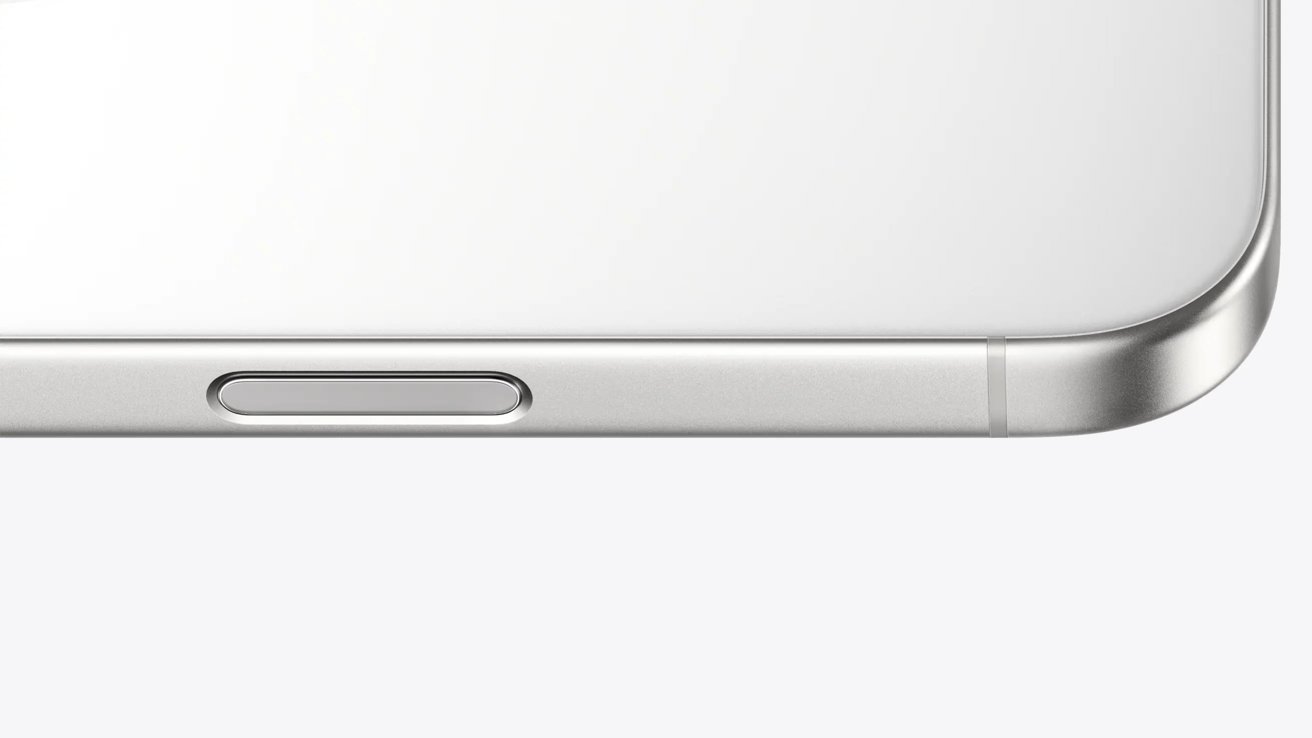
iPhone 16 Pro Max vs iPhone 15 Pro Max: The new Camera Control button
Added to this for the iPhone 15 Pro Max is Roadside Assistance via Satellite. Similar to Emergency SOS via Satellite in concept, it allows users to get broken vehicle assistance in a cellular dead spot.
The iPhone 16 Pro Max continues to have Crash Detection and both "via Satellite" services.
For the iPhone 15 Pro Max, Apple switched out the side toggle for a new Action Button. This could be configured to set the iPhone's ringer to silent, but it can also be used in a variety of different ways.
The iPhone 16 Pro Max retains the Action Button for another year, alongside the new Camera Control.
iPhone 16 Pro Max vs iPhone 15 Pro Max - Capacity, Color, and Pricing
The iPhone 15 Pro Max started at $1,199 for a 256GB capacity, with 512GB and 1TB capacities priced at $1,399 and $1,599 respectively. It's available in four colors: Natural Titanium, Blue Titanium, Black Titanium, and White Titanium.
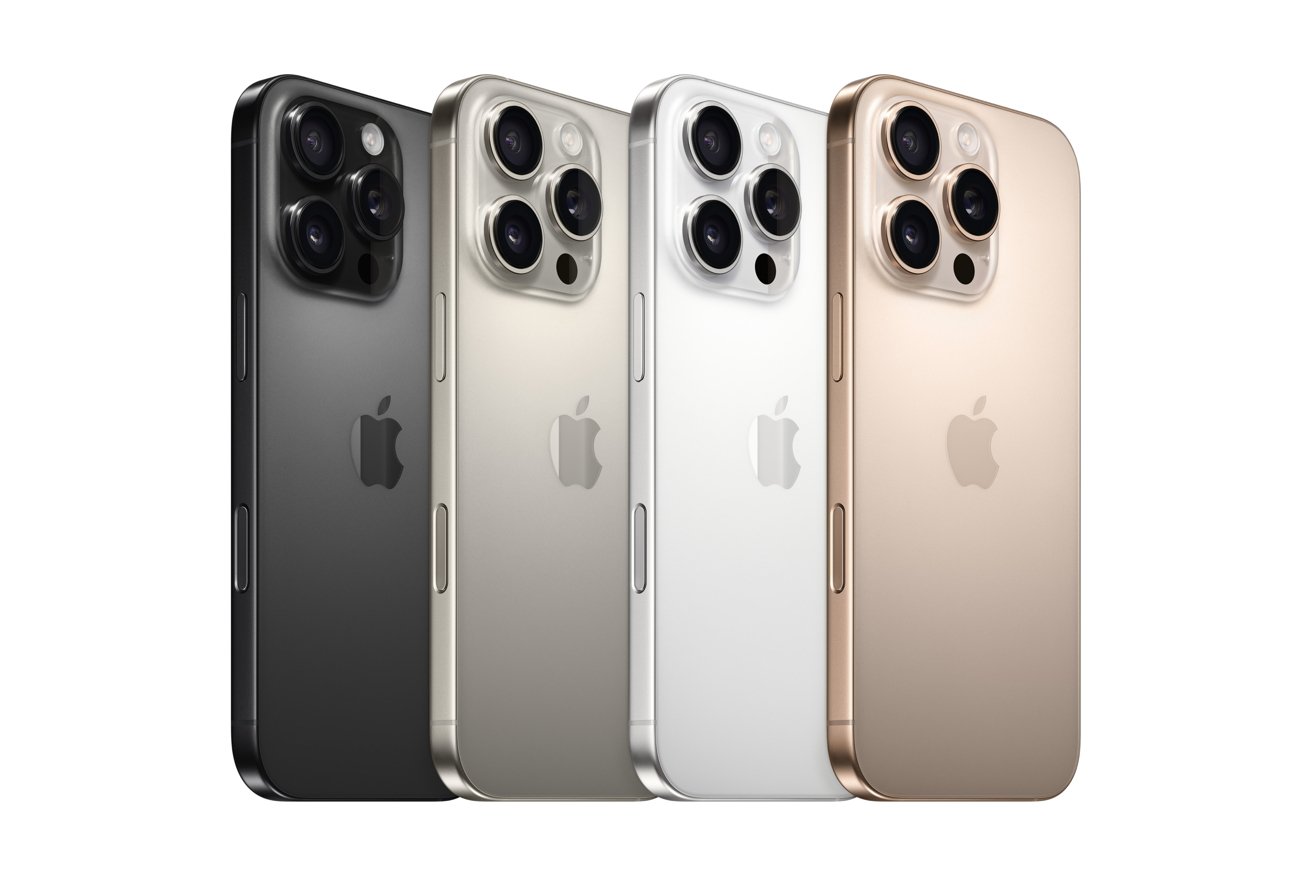
iPhone 16 Pro Max vs iPhone 15 Pro Max: The four color options for 2024
The iPhone 16 Pro Max is sold in the same capacities and prices. However, Blue Titanium is out in favor of Desert Titanium.
iPhone 16 Pro Max vs iPhone 15 Pro Max - Worth the Upgrade?
Owners of the iPhone 15 Pro Max probably won't find that much incentive to upgrade to the iPhone 16 Pro Max this year. The slightly larger screen is nice, as is the new Ultra Wide camera and the performance bump, but that seems a bit weak overall.
What certainly doesn't help is, oddly, Apple's main marketing benefit. The iPhone 16 Pro Max will run Apple Intelligence, but so does the iPhone 15 Pro Max.
The big feature is not actually an incentive that applies to iPhone 15 Pro Max owners, who may well have been using it as part of the developer betas for iOS 18.1. For earlier models, it's still a draw.
Apple did make the iPhone 16 Pro Max the bigger, better smartphone overall, certainly. But it will be iPhone 14 Pro Max and earlier model owners who will be upgrading to it, not those who own 2023's giant iPhone.
Where to buy Apple's iPhone 16 Pro Max and iPhone 15 Pro Max
Wireless carriers are incentivizing both iPhone models, with AT&T planning preorder deals to the tune of up to $1,000 off the iPhone 16 Pro Max with an eligible trade starting Sept. 13.
The iPhone 15 Pro Max, meanwhile, is also incentivized at the following carriers:
You can also find trade-in offers at buyback providers, with exclusive bonuses in effect for a limited time.
For users of older iPhone devices, it can free up cash to put toward the new iPhone 16 Pro Max.
Read on AppleInsider

Comments
Back with my first iPhone (5S), I used one of the physical buttons on the side to activate the image-capture; as one would do with a full stand-alone camera.
Both me and my family found the some shots had a slight motion, as the force to press the button moved the phone a bit.
The shutter button on any stand-alone camera is very loose and perfectly sensitive so that device-movement when held in your hands is not a factor.
Due to the phone moving slightly when I used the side button on an iPhone (as that button on the 5S required some force), I switched to the on-screen red button.
So, I wonder how this new face-touch button will play out.
Might be just fine.
The original iteration of this idea didn't work out for some of us.